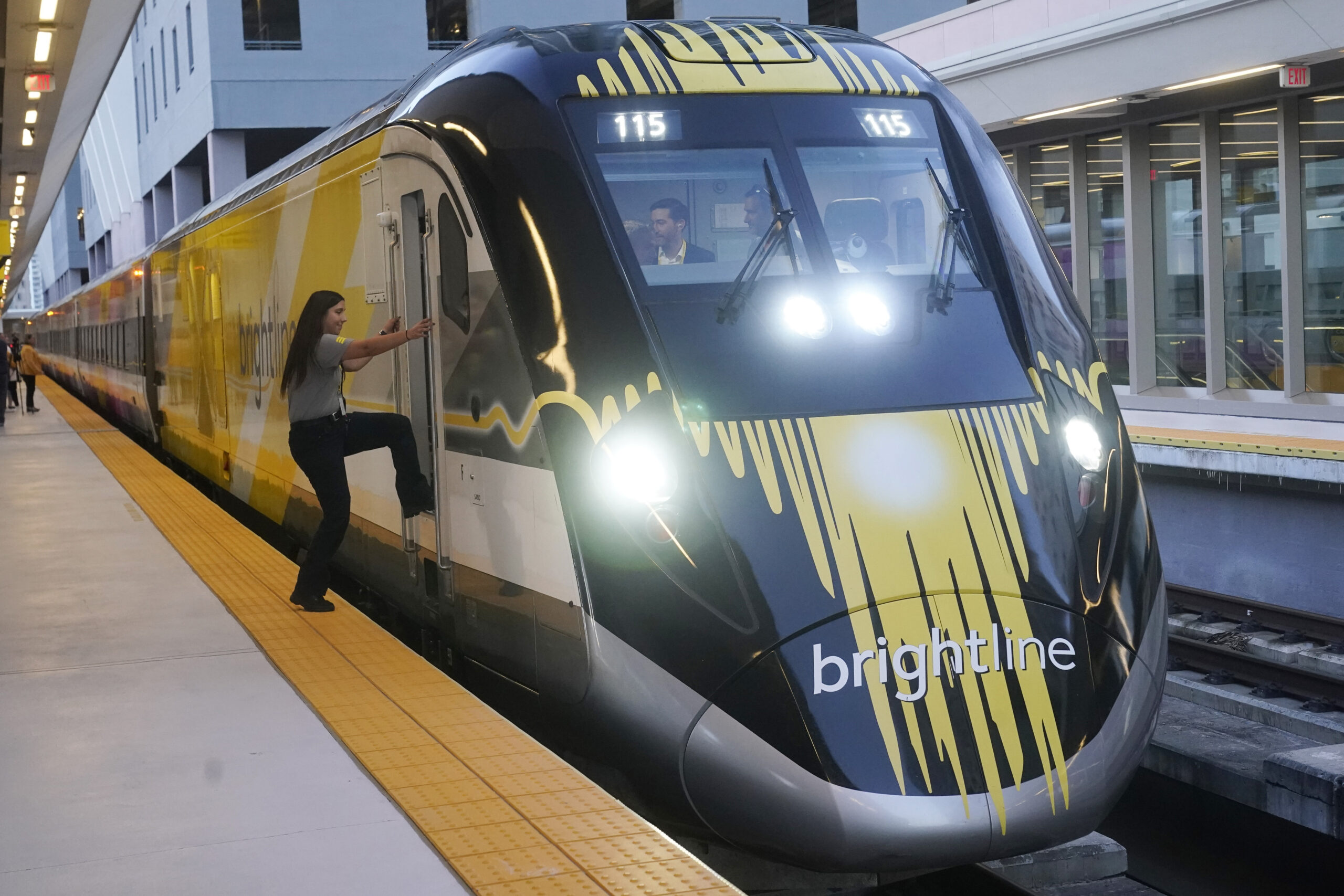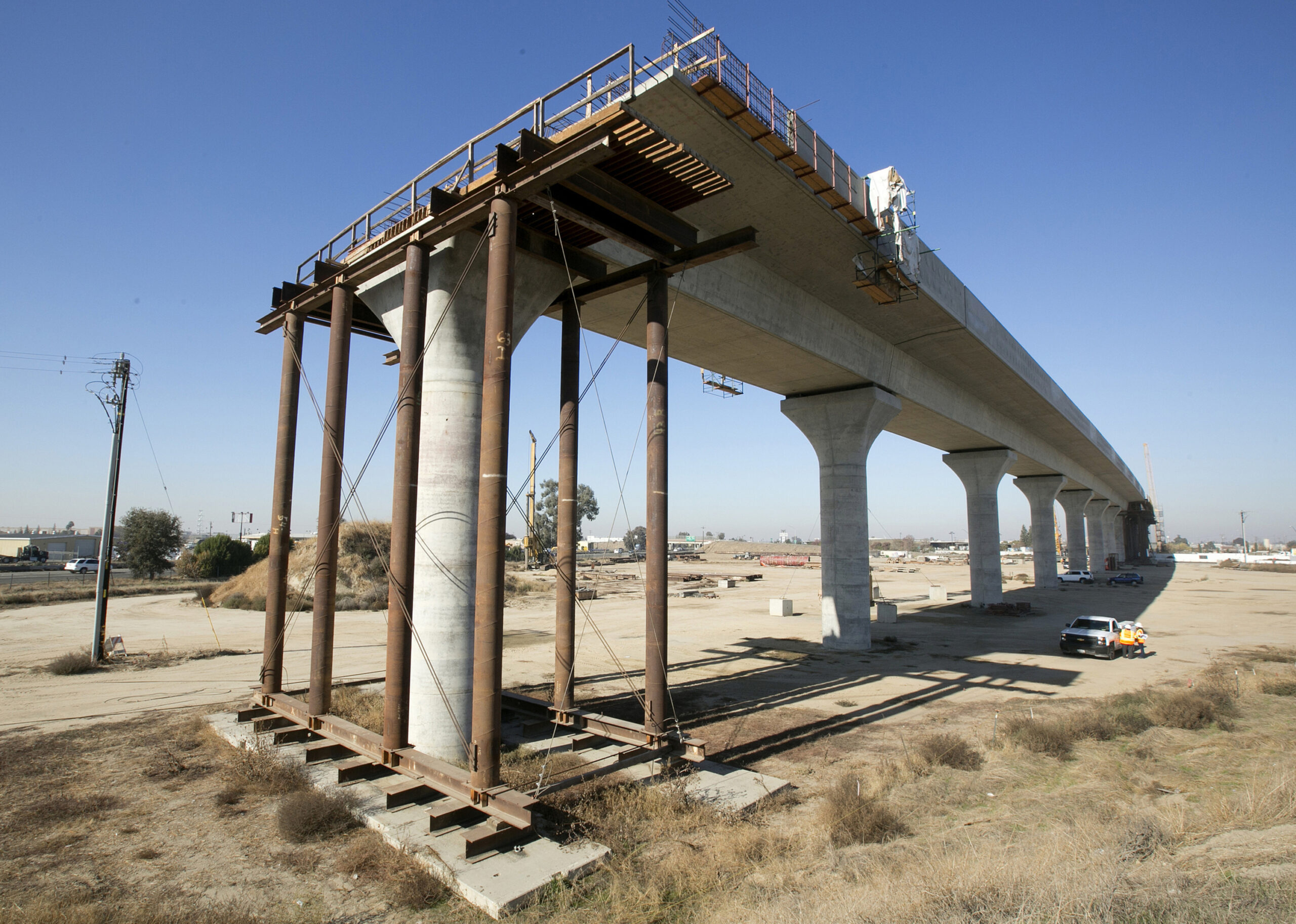The Biden administration hyped an $8.2 billion grant for a pair of passenger rail proposals in early December, injecting life into projects that had stalled due to mismanagement and lack of funding.
The push to get the electric rails moving has been heralded by supporters as the future of public transportation but criticized by those who caution against never-ending complications and lengthy construction times. The money is just a fraction of the total cost to build the routes but underscores, for better or for worse, the Biden administration’s commitment to a high-speed rail.
DESANTIS CAMPAIGN ON THE BRINK AS IOWA CAUCUSES NEAR
The top announcement was the creation of a new California to Nevada line, linking Las Vegas to Los Angeles. The $3 billion, 218-mile, all-electric rail service contract was given to Brightline West, a company that operates the only high-speed private rail service in the United States.
The rest went to the California High-Speed Rail Authority for one of the largest public works projects in state history – and to date, one of its biggest failures. The proposal of a bullet train that would have connected passengers as far north as Sacramento and as far south as San Diego seemed like a good idea to voters when they were pitched it a decade ago. Since then, the much-maligned bullet train project has shattered spending limits at every turn and failed to make any real progress.

The estimate for a completed San Francisco-to-Los Angeles high-speed rail system is up to $128 billion — that’s about four times higher than what voters signed up for when the project was pitched more than a decade ago. What’s worse is that the $128 billion figure is likely to go higher — much higher.
“No one has come up with anything resembling a complete financing plan,” said Dan Walter, an expert in California politics who writes for the nonprofit newsroom CalMatters. “The project limps along on remnants of the bond issue, some money from the state’s cap-and-trade auctions of pollution credits, and occasional handouts from Washington when the Democrats are in power.”
The bullet train pretty much went off the rails at its inception, having no plausible way of living up to its goal of getting riders across the state in three hours or less.
Not only has it become a money pit, but it’s also a source of anger and embarrassment among Californians.

While no one thought it would be technically, financially, or politically easy to get such a massive project up and running, news of gross mismanagement and a budget routinely blown to smithereens has some ready to cut their losses and run. Others have used it as an ode to overspending, a masterclass in mismanagement, and a complete misreading of what the public needs and what the state can deliver.
Former President Donald Trump, who tried unsuccessfully to claw back billions from the project, called it a “disaster” while in office.
“California has been forced to cancel the massive bullet train project after having spent and wasted many billions of dollars,” he once posted. “They owe the Federal Government three and a half-billion dollars. We want that money back now. Whole project is a ‘green’ disaster!”
California has been forced to cancel the massive bullet train project after having spent and wasted many billions of dollars. They owe the Federal Government three and a half billion dollars. We want that money back now. Whole project is a “green” disaster!
— Donald J. Trump (@realDonaldTrump) February 14, 2019
The intrastate high-speed rail system was supposed to cost only $33 billion and be operational by 2020. One year after it was supposed to be up and running, the price tag had topped $100 billion and there wasn’t a start date in sight.
Construction began in 2015, nearly a decade after voters approved initial funding. Since then, there have been significant gaps in funding, not to mention that an estimate has projected ridership interest has waned, dropping by 25%.
Four years ago, Gov. Gavin Newsom (D-CA) unveiled a scaled-down blueprint for his state’s bullet train, proposing that the focus should be on the starter segment, a 171-mile stretch of land in the Central Valley that would begin operating in 2030 and cost $22.8 billion. But today, his scaled-down blueprint is once again starting to get out of reach, with costs now exceeding future funding and the target operational date working on a sliding scale.
An updated 2023 cost analysis report from the California High-Speed Rail Authority showed that costs to build the initial 171-mile land in the Central Valley have shot up to $35 billion, exceeding secured funding, $22.8 billion, by $10 billion.
The cost hike includes $3.9 billion for decisions on whether to have elevated stations and track realignments, $2.1 billion for higher inflation, and $3.7 billion in contingency.
Brian Kelly, rail authority chief executive, told CalMatters that higher costs aren’t just California-centric but instead have affected people all over the nation and represent a “tougher challenge.”
“There has never been an easy time for this project,” he said. “Nothing’s ever been easy here. This project has never had full funding.”
Kelly added that the ballooning price tag for the project has exceeded all of their financial estimates, too.
CLICK HERE FOR MORE FROM THE WASHINGTON EXAMINER
On top of that, now the cost of just one segment is higher than the $33 billion estimate for the completed 500-mile Los Angeles-to-San Francisco high-speed rail system when voters said yes to it in 2008.
Once completed, phase one will connect the state’s fifth and ninth most populous cities, as well as others that have fewer residents.

